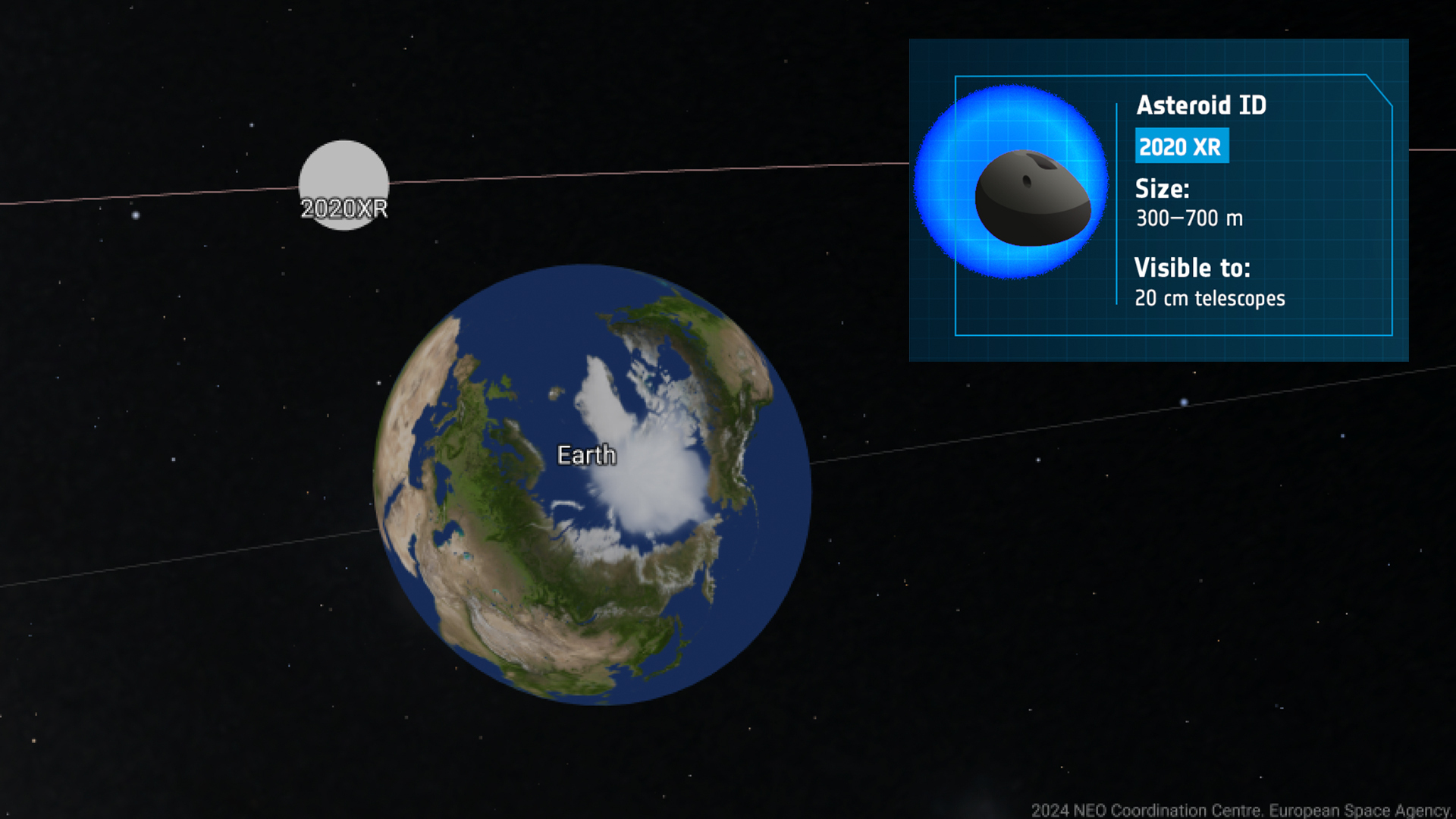
Earth got a relatively close shave this morning (Dec. 4), as a sizable space rock zipped by just 1.4 million miles (2.2 million kilometers) away.
The asteroid, called 2020 XR, made its closest approach today at approximately 12:26 a.m. EST (0526 GMT), passing just under six times the distance between Earth and the moon. The flyby came on the fourth anniversary of 2020 XR's discovery,.
Asteroid 2020 XR is somewhere between 1,000 and 2,300 feet (300 and 700 meters) wide, according to the European Space Agency (ESA). At roughly the size of a large stadium — or several million elephants, according to ChatGPT — 2020 XR is more than capable of destroying one of our Earth cities, should the asteroid ever happen to tragically intersect with one. And, for a little while after the asteroid's 2020 discovery, astronomers feared the space rock had a chance of doing just that.

The near-Earth object (NEO) was discovered using the Pan-STARRS 2 observatory in Hawaii four years ago. The asteroid's apparent orbit at the time indicated the possibility of an impact with Earth in 2028.
However, reexamination of past observation data revealed previously undetected images of 2020 XR, allowing astronomers to more accurately calculate the asteroid's trajectory and ultimately conclude a zero-percent chance of impact with Earth until at least the year 2120.
Related: What are asteroids?
NASA classifies any asteroids or comets in orbits within a similar distance from the sun as Earth as NEOs, and those larger than 460 feet (140 m) that also fly closer than 4.6 million miles (7.5 million km) of Earth are deemed potentially hazardous. As of December 2024, NASA's Jet Propulsion Laboratory is tracking more than 2,400 potentially hazardous asteroids (PHAs), including 2020 XR.
The next close pass by asteroid 2020 XR will occur in November 2028, albeit at a more comfortable distance than this year's flyby. Four years from now, 2020 XR will come within about 11.3 million miles (18.2 million km) of Earth — far more distant, thankfully, than astronomers' first 2028 predictions for the space rock.







